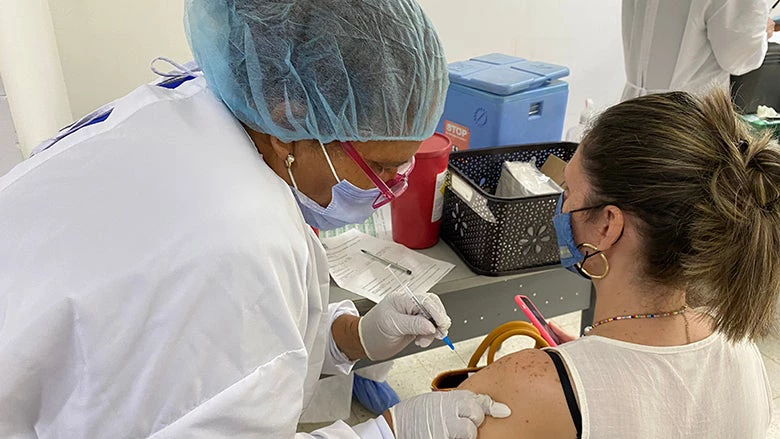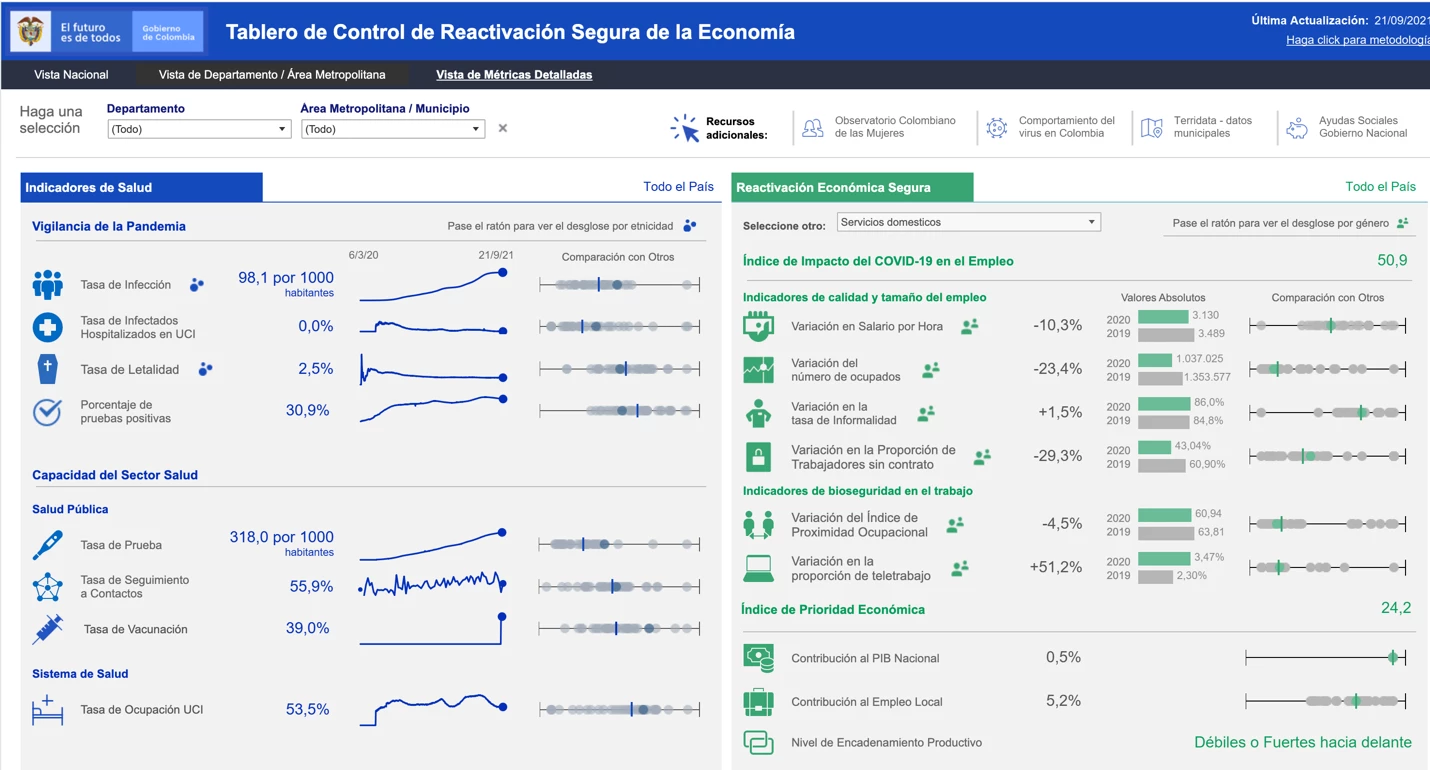People all around the world have struggled to make decisions during the pandemic in the face of great uncertainty and incomplete information. Choices about sending our children to school, mask use, or whether to resume medical visits at the risk of becoming infected with COVID-19 have been part of our day-to-day over the last year and a half.
Government officials have faced a parallel set of tough policy choices, including when schools can be reopened and when stay-at-home orders can be lifted. The data that can inform such decisions is typically fragmented or hard to get.
To help put the relevant data at the fingertips of officials, we worked with the government of Colombia to integrate over two dozen datasets with measures of health and economy activity under the COVID-19 Safe Economic Reactivation Dashboard, launched in June of 2020 and since then updated daily.
This dashboard supports decision-makers in two areas:
- Real-time monitoring of the spread of the virus and the health care system’s capacity
- Preparedness of economic sectors to achieve a safe reactivation
The updated version of the dashboard, now also available on mobile devices, provides synthetic indicators that summarize the immediate effects of the COVID-19 pandemic on size and quality of employment , for all economic sectors, in all the main cities and most departments. Almost all indicators in the dashboard are disaggregated by gender and by ethnicity. This raises awareness about the disproportionate impact of the pandemic on women and on different ethnic groups.
Identify and target
By offering a comparison with pre-pandemic estimates, the dashboard allows national and local decision-makers to identify the economic sectors such as domestic services or tourism that have been more deeply affected by the pandemic and target better employment recovery policies in the mid-term.
Employment data included in the Dashboard reveals three key findings on the labor market:
- Labor markets have been deeply affected by the pandemic, and recovery has been modest. In comparison to 2019, employment had fallen by 14 percentage points (pp) by Mary 2020 and the unemployment rate had more than doubled. Jobs have recovered in 2021 but are still far from their pre-COVID levels. Most of the jobs lost during the pandemic might not be easily recovered, as the labor demand for low-skilled workers remains low. Investing in improving the skills of workers is still an urgent priority.
- The rate of recovery is highly varied across Colombia’s regions. While in July 2021 Medellin and Bucaramanga's employment rate were only 2.2 pp and 1.7 pp lower than pre-COVID employment rates respectively, Bogota's employment gap compared to 2019 was 8.2 pp.
- Women and youth suffered the most from the impacts of the pandemic on the labor market. In domestic services where most workers are women, employment decreased by 10% for men, and by 26% for women during the pandemic. Hourly wages fell by 15% for men and by 10% for women, and informality remained at 84% for men and 86% for women (Figure 1). In general, the pandemic hit harder on women and youth: compared to 2019, by April 2020 occupation rates had decreased by nearly 35% for women and youth, which was 10 pp more than for men. Looking ahead, labor recovery policies in Colombia should focus on closing the employment gaps of vulnerable groups such as youth, women, the disabled, migrants and low-skilled workers, to ensure an inclusive reactivation of the economy.
There are no simple answers to many of the choices that government officials have had to make during the pandemic, but this dashboard is a tool that ensures that Colombia’s officials have ready access to data that can help inform those decisions.
As the pandemic continues its course, the systematic use of data will remain an important asset for the country to manage public health response and achieve an inclusive economic recovery , one that helps the most vulnerable get back to the job market and reduces poverty while stimulating economic growth.






Join the Conversation